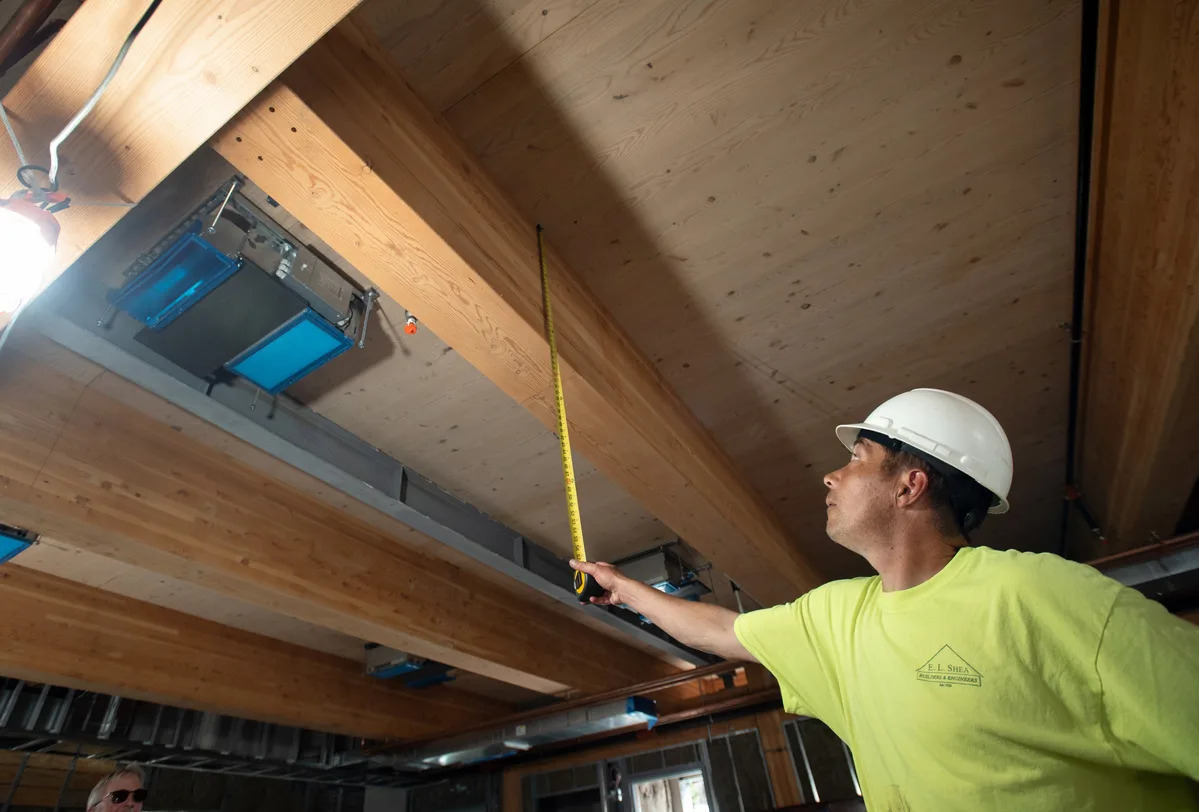
This story appears as part of a collaboration between The Maine Monitor and Maine Focus, the investigative team of the Bangor Daily News, a partnership to strengthen investigative journalism in Maine. You can show your support for this effort with a donation to The Monitor. Read more about the partnership.
Millard Dority came out of retirement to prove a point. He wanted to show that Maine is an obvious location for producing a new type of composite wood building material rather than importing it.
Dority is the former building manager at College of the Atlantic, which has two structures that use the material known as cross-laminated timber, an environmentally friendly competitor to steel and concrete. The college had to source its material from Austria. For his new project, an expansion at Jesup Memorial Library in Bar Harbor, Dority wanted to use Maine wood.
He figured in a state with millions of acres of forests, it would be easy to source wood and process it into CLT. But Maine doesn’t have any factories, so the wood had to be transported from New England to the closest producer in Illinois and then trucked back to the library.
“When you consider we have all of these paper mills that are laying fallow, if one of those was a CLT manufacturer, it would make life a whole lot easier,” Dority said. The library expansion is due to be completed in December.
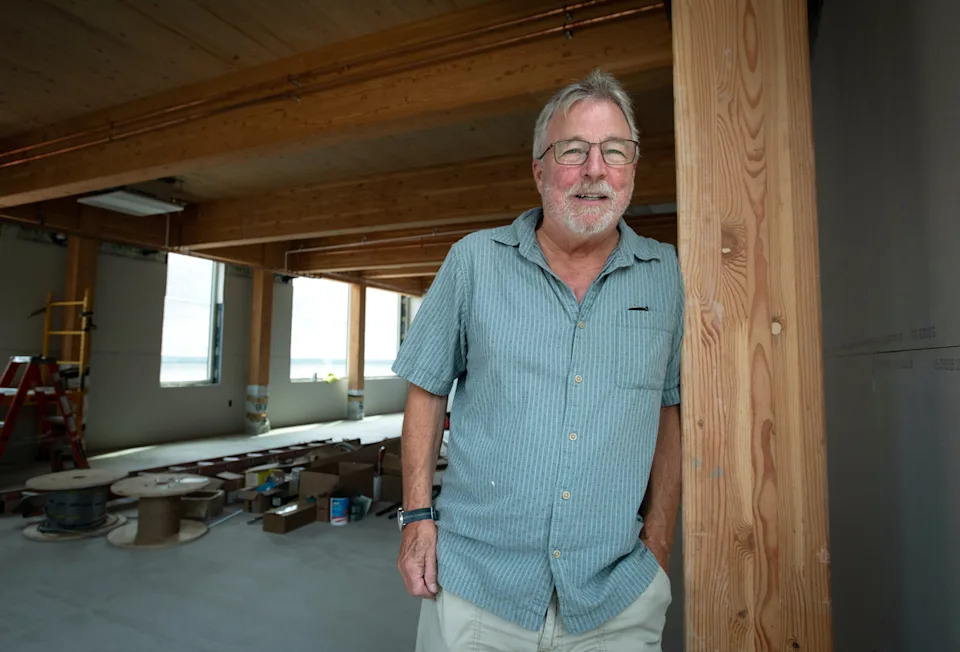
The library’s experience showed a hole in Maine’s strategy to open up a market that could use more of the wood it produces, something that could reshape the forest economy. In the short term, it is making it harder for those who want buildings using it to reap the environmental benefits of the emerging product.
Two CLT companies announced plans to come to Maine in 2018, but they quickly backed out. The state’s economic development department along with private-sector partners have tried to recruit others to make the state the first in the Northeast to get a factory, but their efforts have failed so far due in part to lagging state incentives, a nascent local market for material and a spotty wood supply chain.
CLT is made by gluing together multiple layers of solid wood boards, with the grain of each layer oriented perpendicular to each other, adding strength and stability compared with traditional lumber. It competes with concrete and steel in strength but is more environmentally friendly and lighter weight.
The material has long been used in Europe, but it is relatively new in the U.S. Maine added CLT to its building code in January 2021. For it to become popular here, builders need to see structures made from it showing the material can function reliably to replace steel and concrete, especially for commercial and institutional construction, said Ellen Belknap, principal at SMRT Architects & Engineers.
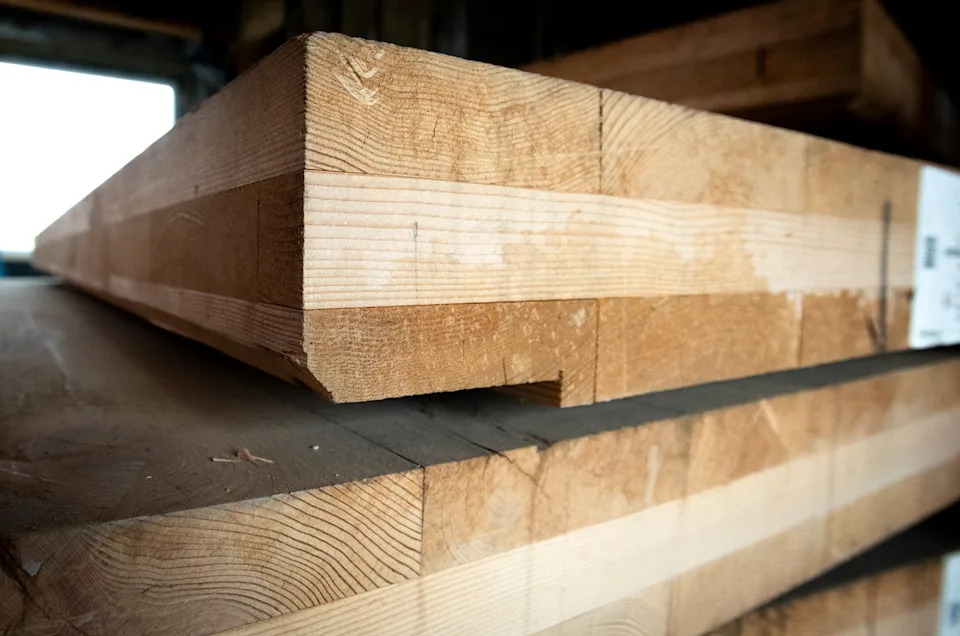
CLT costs anywhere from 10 percent to 30 percent more, a price difference that could decrease if more buildings that use it went up in the state. But the Northeast region as a whole only has 117 CLT buildings, with Maine having 27 in design, built or completed. Among the most notable ones are Bowdoin College’s Arctic studies building, the Portland Museum of Art expansion and a new part of the Portland Jetport.
The Bar Harbor project was a play by designers to showcase that CLT is strong enough to compete with steel and cement in a big, three-story building in a tourism mecca that attracts several million visitors per year.
The library is using spruce-pine-fir and eastern hemlock from Maine, New Hampshire and Vermont, which are underused wood species getting new markets with the advent of CLT, said Andy Fast, a forestry expert at the University of New Hampshire Cooperative Extension.
“Supply chain efficiencies will determine whether it’s a viable product longer term,” Fast said.
Just over six years ago, LignaTerra Global of North Carolina promised to bring 100 jobs to the former Katahdin Paper site in Millinocket. When an IRS lien on the property scuttled that plan, LignaTerra chose the former Lincoln Paper and Tissue mill location. That fell through when the company failed to secure financing. LignaTerra did not respond to questions about whether it would reconsider Maine.
Around the same time, SmartLam, a Montana company, pledged $22 million to build a CLT factory in Maine. It canceled the plan a year later and located to Alabama, which has cheaper electricity, labor and other rates, industry experts said. SmartLam did not respond to a Bangor Daily News request to comment on its pullout from Maine.
There have been more companies with initial interest in Maine than just those two, said Belknap, who has been collaborating with state officials and private companies to attract CLT makers. She said Maine gets interest from companies looking to locate here four or five times a year. After they research the market, nothing happens.
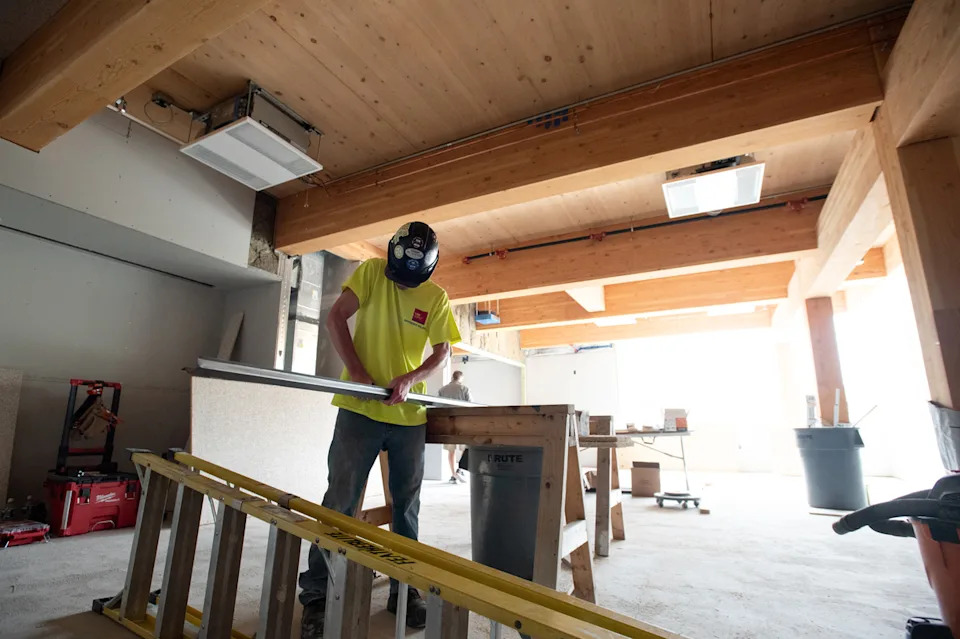
The state is making efforts to turn that around, said Charlotte Mace, director of the Maine Office of Business Development. The Dirigo Business Incentives program supports workforce development and a 10 percent capital investment credit or capped at $2 million annually that can be taken over five years. The state also is promoting its forest resources at national and international industry events, she said.
It also has funded several local CLT projects including the Jesup Library, the Island Falls pedestrian bridge, and Whole Trees Structures, a round timber company in Ashland. Having large projects in the works also guarantees income and jobs to take the risk out of investments, Mace said.
“Large-scale projects, such as major commercial or infrastructure developments, are most often the market drivers for establishing new production facilities,” she said.
East Coast states are competing with incentives to lure in CLT producers and new building projects. The Massachusetts legislature several years ago authorized $3 million for a CLT plant. Boston hosted a mass timber accelerator program in 2022 aimed at attracting projects using it. Maine also has an accelerator program based at the University of Maine, and Atlanta and New York City have similar programs.
The market demand in Maine and the Northeast states that could be customers isn’t developed enough to recoup the $75 million to $150 million required to set up a factory, Belknap said. Another big challenge is that the raw material supply chain in Maine is complicated because the state has a lot of private wood lot owners.
“I feel like we’re still building the market,” Belknap said. “CLT is a great environmental benefit, but the dollars and cents case is harder to make.”
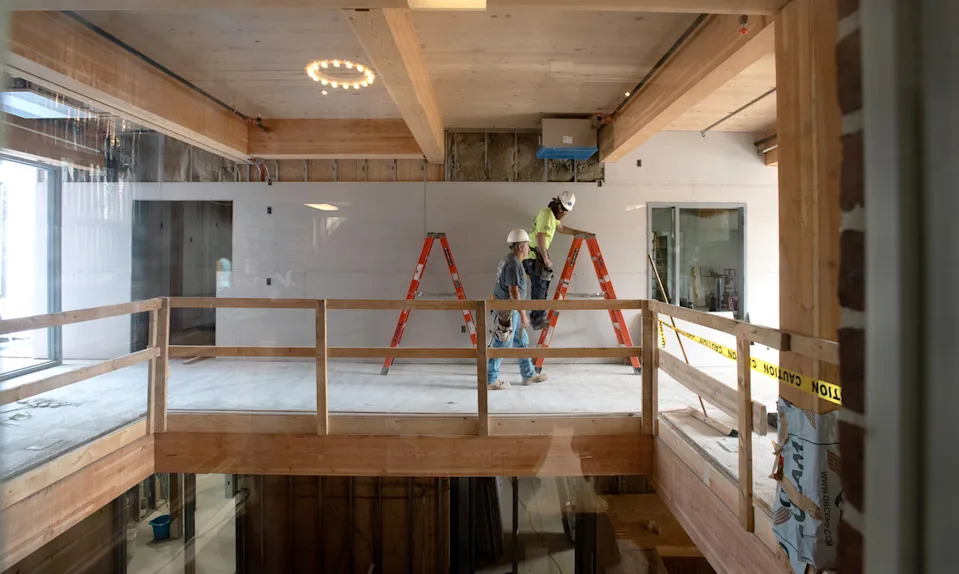
While CLT demand is growing, it may never find much of a building market in Maine, said Peter DelGreco, CEO of Maine & Co., an economic development group that collaborates with the state to attract companies. Demand has to be regional, with big markets nearby in Boston, New York, Philadelphia and Washington, D.C. But companies will need to have the right location, funding and market timing, he said.
High interest rates also have slowed construction in general this year. Existing CLT factories are not running at full capacity, so it is hard to set up new plants, said Bill Parsons, chief operating officer at WoodWorks, a consultancy on wood buildings.
Uncertainty about tariffs also is stunting expansion of the market. It still is not clear how President Donald Trump’s tariffs might affect CLT shipped in from Canada or Europe. Belknap said the tariffs, if imposed on the material, might boost the growth of that market in the U.S., which would then have a price advantage. But the tariffs also could potentially raise the cost of windows, wiring and other parts of a building, making it difficult to predict the building’s final price, Parsons said.
Shane O’Neill, the forest industry business development manager at the University of Maine, authored a 2023 study for the Legislature on the barriers to the use of CLT here. He concluded that incentives and collaboration are needed to nurture the industry’s growth.
He recommended funding a building project that could be used as a teaching tool. It also said the state’s attraction strategy needed to be improved with better metrics on infrastructure, workforce readiness, supply chain partnerships and timber resources. The strategy should also include a way to derisk investments. His report also advised creating a workforce development strategy.
“It all comes down to what the incentive package is that we can put together,” O’Neill said. “We’re not a very rich state.”
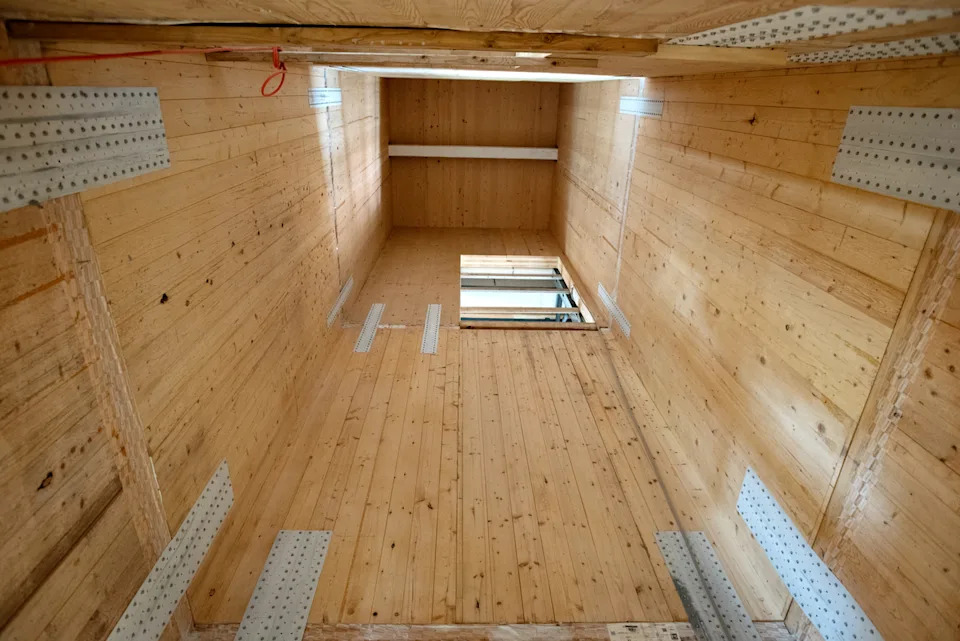
A proposed $50 million bond bill aims to add more to Maine’s incentives. The bill from Rep. Sam Zager, D-Portland, would help finance the design and construction or retrofitting of a CLT manufacturing facility in Maine using sustainably harvested Maine forest products. Zager said sending Maine wood out of state is the sort of problem his bill aims to solve.
The Maine Forest Products Council supported the proposal, saying it might let Maine become the first state in the Northeast to have a CLT factory.
“I don’t think we’ve missed the mark yet,” said Krysta West, the council’s executive director. “But if this facility is located in Maine or elsewhere it still will be beneficial to Maine’s forest industry.”
Support for this Bangor Daily News story was provided by the Unity Foundation, a fund at the Maine Community Foundation and donations by BDN readers.


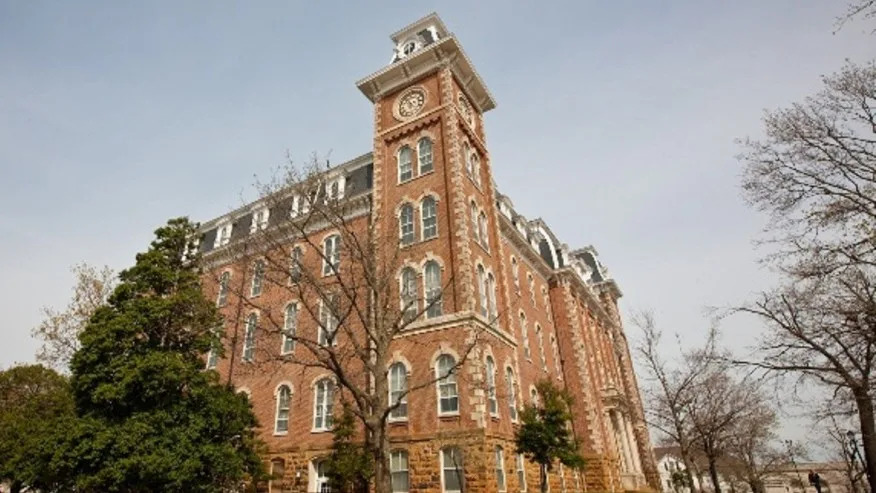





Comments